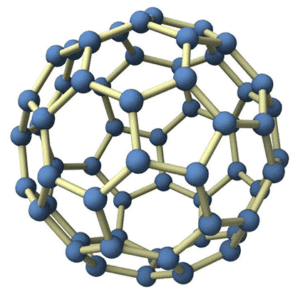Thanks to recent technological developments, we have now seen a breakthrough in plant genetic engineering. Between a combination of carbon nanotubes and CRISPR technology, scientists are now better able to modify plants on a molecular level. This is essential research due to the numerous benefits that plant genetic engineering can provide.
For instance, some research around plant engineering focuses on making plants more resistant to pesticides and insects. By doing so, they can produce more crops since not as many of them are lost. Other research, such as that by Dr. Gozde Demirer, focuses on modifying plants in a way that makes them more suitable for different climates. For instance, how to make plants that can grow better in warmer or drier temperatures.
So, whether it’s genetically modified corn, grain, olive oil, or something else, using science to produce better products benefits us all. By making plants more resistant to things like temperature and insects, we can create more food in areas that typically have a harder time doing so. Below, we’ll outline how scientists use carbon nanotubes in combination with CRISPR technology to accomplish this.
What are Carbon Nanotubes?
First, it’s important to understand the concept of carbon nanotubes. Carbon nanotubes are cylindrical molecules made up of rolled-up sheets of single-layer carbon atoms. These carbon nanotubes are incredibly small, with some having a diameter of less than 1 nanometer. One of the primary features of carbon nanotubes is how strong they are due to how they are chemically bonded. The carbon-carbon double bond is the strongest chemical bond in nature.
In addition, carbon nanotubes tend to link together via what are known as van der Waals forces. Between this tendency and their chemical makeup, nanotubes provide the opportunity to have high-strength, low-weight materials. Finally, another benefit of carbon nanotubes is that they are highly conducive to both electricity and heat, making them useful in a range of applications.
Challenges in Plant Genetic Engineering
There are two primary challenges when it comes to plant genetic engineering. On a technical level, the first challenge is breaking through the cell wall. Since plants grow in one spot, they have evolved to have a stronger cell wall than animals. At the same time, animals can move around to avoid their predators, plants need to develop their own defenses. As a result, scientists have had a hard time modifying plants due to the inability to get through the plant cell wall. This is one area where nanotubes have helped since they are small enough to get through the cell wall.
The other challenge for scientists in this field is public misconceptions. Many believe that genetically modified plants are somehow less safe than those naturally grown, which is not the case. Scientists are now trying to combat this negative public perception by showing that using carbon nanotubes in conjunction with CRISPR technology is essentially the same process that plants undergo in natural evolution.
How CRISPR Technology Has Changed Plant Genetic Engineering
CRISPR is a group of DNA sequences that you can find in organisms such as bacteria. The CRISPR DNA section is heavily involved with the defense mechanisms of these organisms. Scientists use CRISPR technology to modify specific genes within an organism without impacting any of the other genes. This means that we can now modify plants on a molecular level and no longer need to input genes from other plants, giving us more control over the outcomes.
So far, CRISPR technology has been essential for improving things like tomatoes and other fruit crops. We know that these modified fruits and vegetables are better able to stand up to biotic and abiotic stress while also enhancing fruit quality.
Carbon Nanotubes and CRISPR
The newest research uses carbon nanotubes to deliver new DNA to a plant specimen. When this happens, the cells within the plant use this DNA to make proteins and RNA. A few days later, the enzymes in the plan break down the DNA delivered by the nanotubes, leaving no footprint. Thanks to CRISPR technology, the plant’s DNA is only changed at the specific site that the scientists want to change. This contrasts with other plant genome editing methods in that no foreign DNA goes into the plant’s genome.
Essentially, by the time these plants enter the food chain, there is nothing to distinguish them from the other plants. People and animals would not be eating any biology tools, just a plant with a gene changed to make it more nutrient-rich or resistant to heat.
Fullerenes Carbon Nanotubes Support CRISPR Technology for Plant Genetic Engineering | SES Research – Houston, TX



